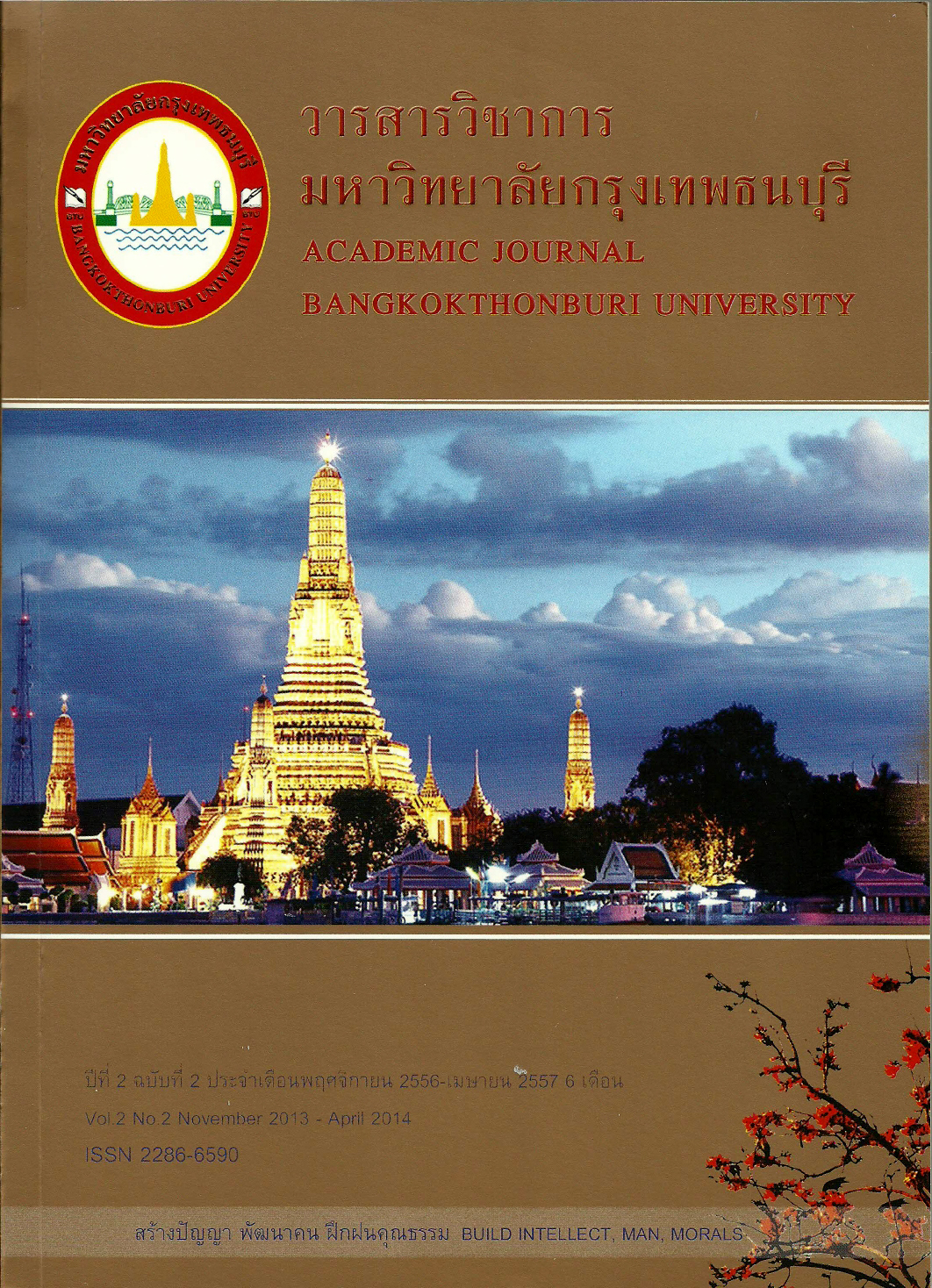อาเซียนกับการจัดการศึกษาด้านดนตรีในประเทศไทย
Main Article Content
Abstract
ผู้คนในแว่นแคว้นโบราณในดินแดนเอเชียอาคเนย์เจริญด้วยอารยธรรมมาแล้วไม่น้อยกว่า 4,000 ปี แต่ละแว่นแคว้นต่างก็มีวัฒนธรรมของตนเองโดยเฉพาะ ได้แก่ อาณาจักรขอมทางด้านตะวันออก ทวารวดี ทางตะวันตก ล้านนาทางเหนือและศรีวิชัยทางใต้ โดยมีอาณาจักรสยามที่ผู้คนอพยพโยกย้ายมาจากทาง ตอนใต้ของประเทศจีน และประสมประสานกับชาวสยามพื้นเมืองดั้งเดิมที่อยู่ท่ามกลางอาณาจักรอื่นๆ อาณาจักรเหล่านี้มิได้อยู่โดดเดี่ยวแต่มีการติดต่อระหว่างกันทั้งด้านการค้าขาย การแต่งงาน ตลอดจน การสงคราม ก่อให้เกิดการกลืนกลายทางวัฒนธรรมซึ่งกันและกันอย่างกว้างขวาง ครั้นมีการแบ่งเขตแดน ประเทศ จึงยากที่จะระบุลงไปให้แน่ชัดได้ว่าวัฒนธรรมนั้นๆเป็นของใครมาแต่เดิม และเมื่อมีการรวมกลุ่ม กันเป็นภูมิภาคอาเซียนจึงต้องมีการบริหารจัดการด้านวัฒนธรรมอย่างเหมาะสม โดยเฉพาะอย่างยิ่งด้าน ดนตรี ที่จำเป็นต้องอาศัยภาษาอังกฤษเป็นสื่อกลางทั้งเพื่อการถ่ายทอดดนตรีไทยและเรียนรู้ดนตรีต่างชาติ
People of Ancient cities in Southeast Asia were civilized, at least 4,000 years ago, and each city had its own culture. Those cities were Khom in the east, Davaravati the west, Lanna the north, and Srivijaya in the south. People of ancient Siam whom migrated from south China and mixed with local people were among these cities. Each city was never alone but connected to each other in many ways, such as trading, intercultural marriage and even war. This movement created cultural assimilation amongst them all over the region. After the boundary of the countries was drawn on the map, it is hard to tell the origin of each particular tradition. Particularly when the ASEAN is established, Thai need a proper cultural management especially in music that requires English language for transmission Thai music and to learn music from abroad.


